
SATURDAY, MAY 28, 2016: NOTE TO FILE

Aluna
There is no life without thought
Eric Lee, A-SOCIATED PRESS
TOPICS: KOGI, TAIRONA, FROM THE WIRES, SUSTAINER CULTURE
Abstract: Aluna is a documentary made by the Kogi of Colombia in 2011 as a wake-up message needed because we Younger Brothers failed to listen to their first warning in 1990. The Kogi are a remnant population of the Tairona civilization, the only functioning complex society not destroyed or assimilated by industrial society (yet). They regard themselves as developmentally more advanced than we five-year-olds with machetes, cars, and nuclear weapons. They have lived sustainably for eleven hundred years by managing their commons. We haven't.
TUCSON (A-P) — The following is a transcript of Aluna (2012), a documentary of the Kogi mámas' final warning. To see the film, there is pay per view or order the DVD. Also see: Can we learn from these people?
The film, as of Feb 4, 2018, is on YouTube, and hopefully won't be taken down. Or view here:
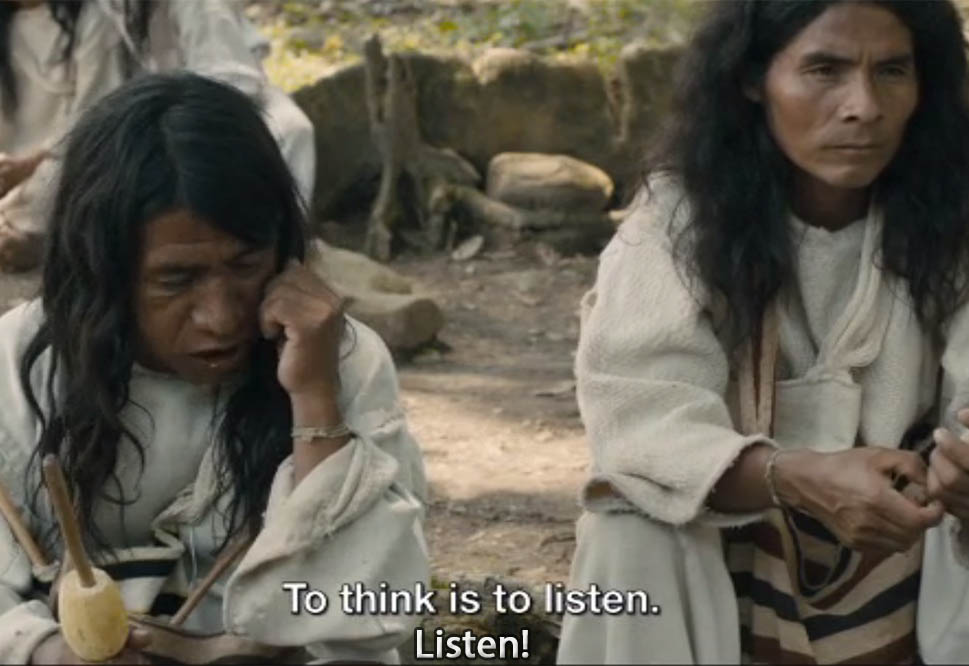
In the beginning there was nothing.
All was darkness; Depth.
There was nothing at all.
She was Aluna;
She was pure thought without form.
She began to think.
The Mother conceived the world in the darkness.
She conceived us as ideas.
As we think out a house before we begin to make it real
She spun the thread;
Spinning us all in the story, creating us in thought.
And then came the Light, and the world was real.
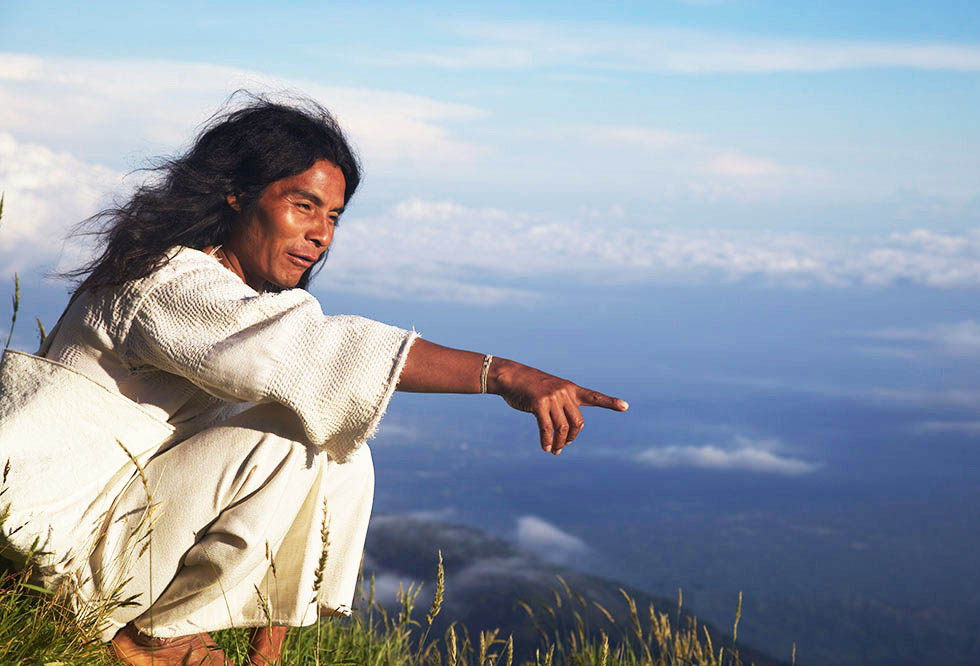 2:38 [BBC] I first met Shibulata when he was fifty. I was 48. He is 70 now.
2:38 [BBC] I first met Shibulata when he was fifty. I was 48. He is 70 now.
2:58 Sierra Nevada de Santa Marta, Colombia, July 2011. Around 20,000 Kogi [high estimate] live here, the heartland. They have no wheel, no writing, and do not welcome strangers. They believe that their job is to take care of the world. Shibulata is called a máma, it means enlightened [or Sun]. He is training his daughter who uses the name Francisca. The mámas said they wanted to work with me because the world is sick and dying, and we have to understand that. They decided to abandon centuries of caution and warn us.
4:13 I came to the Sierra Nevada in 1988, Allan Ereira working for the BBC. The mámas said they wanted to send us a message. [Máma parting words] "I'm here, we all are here, to give a warning....Animals die, the trees dry up, things become ill, many new illnesses will appear, there will be no cure or medicine for them...they say that we mutilate the world because we do not remember the Great Mother, but unless we do something the world is coming to an end. They [Younger Brother] have destroyed so much, do they see? No. Understand? No. Start to understand or what will happen? Right, that's it."
5:22 Then they waited, watched, and listened to Nature. "We have not spoken clearly. Our deep analysis has repeatedly confirmed the need for Alan to make a new film. The earth is a living body, it has veins and blood [metaphorically speaking]. Damaging certain places is like cutting off a limb [e.g. Aswan High Dam]. It damages the whole body. This place is called Sezhua. It is an esuama. Esuamas connect the mountains with the shore. Younger Brother must listen and stop causing damage or Nature herself will finish us off. We must renew this message to our English brother so that he will explain it to the world."
7:00 [BBC] I'd stayed in touch for twenty years, but not in summers before. In the mean time I had retired, I had no BBC helicopter and the Kogi had learned to use a camera. [Kogi] "First they film and then they edit. Then they show it to other Younger Brothers. This is what they plan to do. We'll have to explain everything point by point from the shore to the mountain to show them very clearly."
7:48 They wanted to show our scientists the way Nature interconnects, so together we constructed a plan. "We will travel to London to pick up a gold thread and bring it back. We start here at Haba Shikaka. We lay the gold thread to show important sites. [phone rings] "Hello, this is Allan Ereira, I'm phoning to confirm our order situation [for gold thread]...there is a real possibility that they may come to you to collect it.
9:48 [Shibulata and Francisca on streets of Santa Marta] They call this the civilized world. It is a sort of joke. Here they [the Kogi] have no address, no documents, no identity. They speak no Spanish, have no signature. To them shoes would break the connection between humans and the earth. Without shoes you are not allowed to board a plane.
11:50 [in Sussex, England] I think they are going to need 400 km of gold thread. "Is that a precise amount?" There is no way to be really precise about it, is there? I think the question is how long is a piece of string? "Do come through and let me show you the machine that's made this gold thread I've made for you, here. Now the thread is made by pushing a chorion through a pipe here and the wire wraps around it and it runs onto a reel at the bottom here."
12:38 [Kogi] "When time began the Mother laid a black thread linking special sites. The Black Line [invisible as are lines of thought]. But now Younger Brother is destroying many of these sites. We want to show the Black Line using the gold thread." It all seems so obvious to them, places are linked by a black thread as invisible sort and gold is linked to Aluna. It never decays, but what's that to us?
13:30 [Mill Hill Observatory, England] We arranged a meeting with a world renowned astronomer [Richard Ellis, Caltech] to see if the Kogi picture of the universe [a global Gaia hypothesis-like picture of Earth] can make sense as science. "I'd like to begin by asking the Kogi view of the world, how large it is and its form?" [Kogi] "According to our ancestors the universe is very large and we see very little of it. This is Se, the darkness. Se is the mother and father of everything."
14:15 Their picture of the universe is never going to be yours. [Astronomer] "No, because I have seen things that they could not possibly imagine." Then what you talk about is what the rest of the normal human race can't imagine. "That's not right, can't protest it." Well, I hear the words 'dark energy'. "Ah, well, dark energy is a recent discovery." When you say 'dark energy' what are you talking about? "It is a property, probably of space, that we haven't yet understood, that makes the universe accelerate and it's a mystery at the moment." But it fills all space? "It fills all space. It could take another hundred years before we really finally understand what's going on." [Kogi] "We were left objects, like maps that show us where to connect with the darkness. These places, or nodes, are called esuamas." [Astronomer] "And these nodes are intersections of the material world and the darkness, is that right? I'm trying to understand whether the Kogi can grasp the idea of learning something new from an instrument like a telescope, the concept of discoveries."
15:34 [BBC] "I think that their notion of acquiring knowledge is the opposite of ours. I think our notion is that each generation knows more than the one before, and theirs is that each knows less than the one before" [Kogi] "The world of Se, the dark world we cannot see is linked to the material world in places which must not be damaged. We know how to concentrate to connect with the darkness in Aluna in thought."
16:35 [Astronomer] "Here he is in London learning completely new things that he couldn't possibly have imagined in his village. Most people would say that experience changes you, maybe irreversibly. But I don't get that impression looking at the máma. My impression is that he has a vision and his purpose is to tell of that vision, and that's why he is here. What we see through the telescope, this is a picture of a small part of the sky, and what we see is lots of systems of stars that we couldn't see without the telescope." [Kogi] "This star is called Sulabena. We cannot see this star in the sky. Its light is produced by a great fire." [Astronomer] "Why couldn't we learn from them?"
18:00 "We the mámas know that there are special sites and they are threaded together. We're explaining this to our brothers across the sea so we can work with them and show the connection between places." [They are talking systems ecology, not astronomy.]
18:50 The mámas set out to trace a black line along the shore that joins specific sites by the mouths of rivers. These, they say, connect directly [actually] with locations on the mountains and where they used to do their work before the modern world took over and changed things.
19:23 [Kogi] "There was a big mangrove lagoon here. We used to make payments to the Mother here. That's not possible now. This place [behind barbed wire] is the origin of everything. It is the start of the thread tying the material world to Aluna. It is mother and father to everything.
20:13 The site may have been destroyed, but that's the point of the journey. The gold thread will be laid, the hidden line will be revealed. [Kogi] "Shikaka is the Black Thread. Shi means thread. It connects everything. Important sites along the Line on the coast are connected to esuamas in the mountain. We collect materials here on the shore to make payments in the mountains and we bring materials from the mountain to make payments [offerings] down here."
21:19 Esuama means place of authority, the Kogi believe that's how Nature operates. Esuamas in the mountains have direct linkage to places on the shore. The Kogi told me before about token objects they exchanged between the mountain and shore but I thought it was symbolic.
21:44 [Kogi] "We gather shells here. They are like seeds of knowledge. We put them in the sugui. We must always carry the sugui. When we taste the shells we connect with Aluna, with thought."
22:28 Mixing the burned crushed shells with water produces lime. That makes a paste in their mouths that Kogi men say connects them to the source of life. That paste is rubbed off the stick onto the top of the sugui. "Our thoughts build up on the top of the sugui. Each man carries the book of his thoughts. Sugui means to know everything. To be given the sugui means to listen. To listen. That is why we have ears. To think is to listen. Listen."
24:24 "In the days of our ancestors, we made payments at the special sites here. But now they are destroying these sites. This lagoon was larger. It is drying out bit by bit. It must not be damaged further. We have walked for a long time. We stop here. Now what do we do? We make a payment. They might not believe us. That is why we are walking along the Line making payments at all the sites connecting with the mountain in Aluna. They must see us do this."
26:40 Why do you want Younger Brother to see this? What is the point? How will this change Younger Brother? I don't understand. "We have always cared for this place, but Younger Brother destroyed it. He has been destroying everything. The world is our mother. If we destroy her, where will we live? It is almost the end of the world. That's why we need to show you all this."
27:20 I just can't see that what happens to one specific site is echoed in another miles away [he is too literal], but the mámas say understanding that is the key to healing the world. [To doctor in town] "You have been working as a doctor in the Sierras for many years, you have got to know the Kogis very well, you've learned a good deal about them." [Dr. Jules Camillo, MD] "For the last 35 years." Are there things you've seen a máma or mámas do that you've thought that only a máma could do that. "Take the basin of the Guachaca river. It was completely deforested by the cocaine producers and cattle farmers. It was practically dead until they returned it to the indigenous people. And that was only 20 years ago. Today the basin is utterly changed. What was once a cattle ranch and a nearly dried up river, now there are forests, many animals, the river is full again. It's astonishing. But these are not immediate results." [Kogi] "When a baby is born is it an adult the next day?"
29:13 Jaciento, what is the plan for today's filming? What do you want to do? "We're going to another site. The mámas will connect with the sites at the top of the mountain." [BBC] "I am sure all this is all very interesting to you but I thought we were making...the Kogi wanted to explain that the world is dying because of our actions and they wanted to make this plain and clear at certain sites along the Black Line. So far I have seen nothing to indicate that the world is suffering or the world is dying. I have seen nothing to indicate that what happens at these places on the Black Line has anything to do with the health of the world." "OK I will tell them. They will consult the water. We must show you in action that we really have a connection with Nature." [BBC] "I agree that it would be a good idea for the mámas to consult and think more about what they are doing and consider how they communicate with us. They need to show to us that they actually do have something to say, to show that places along the coast are connected to places higher up and directly affect them. We really have to go up the mountain and see the connection."
31:00 [Kogi] "That is how we communicate with the maize and the sea and with the mother. The waters speak, the waters speak. [by divination: hollow cylinder dropped in bowl of water, bubbles arise and 'speak'.] The Mother, through the water, is asking: are you going to help me or just take pictures? Do you think we say these words for the sake of talking? We are speaking the truth! We consult the water. We read the bubbles and the mother is telling us the whole world must take notice to see what's happening. We can see this in the bubbles like reading a book. It's true! It's true! The mother speaks through the bubbles. It's the truth. You must straighten out what we say to make sure it is understood." [Percival Lowell read the faint image of Mars and saw canals. Intelligence is implied, as Carl Sagan noted, "The only unresolved question was which side of the telescope the intelligence was on." The intelligence is not on the bubble side. Consulting the bubbles is a contemplative act that quiets the discursive mind (the internal chatter) to awaken the mind without fixing it on any one thought, "the secret awaits for the insight." The mámas are observational systems ecologists and their work is to make the rounds, listen, see and think, which also involves making payments. Consulting the bubbles is to consult with the totality of each mámas' lifetime of observation, the totality of their ancestral observations as conveyed through 18 years of education, and their bubbles are telling them over and over that the world is being seriously compromised, not as a conjecture, but as an in-your-face (of those who would but look and listen) reality. When all the mámas see the same thing unfolding over their lifetimes, they have a message and it is not that of one máma that there are canals on Mars. Basically it the same message as our system ecologists have been trying to convey since the 1970s and our naturalist mámas before them.]
33:02 [BBC] "I'm sorry but the bubbles don't speak to us. We have to see the connection with esuama. [on radio to military] What is the first possible date for going up the mountain? We just found out that there are guerrillas in the Sierra Nevada. They know foreigners are coming which makes it very dangerous for us. Right, obviously we must cancel, we can't take the risk of going anywhere dangerous. How long will it take them to get up there, find....and come back down again?....."
33:52 We dare not fly up the mountain even though we have a helicopter for the day. [Kogi] "Younger Brother doesn't understand. They do not know these sites are special. If they continue destroying these sites no-one will survive. The hill of Hukulwa stood guard at the ocean. He has authority over many things, over wind, fish and animals. He was the highest authority. The leader. It never occurred to any of us, not even my teacher, that they would demolish Hukulwa and build Puerto Brisa.
35:02 [CNN 21 September, 2006] The indigenous tribes are so alarmed that they walk for days from communities on the world's highest coastal mountains to reach this site on the shore. Developers have dug a trench to drain the lagoons here, mangrove swamps teeming with life. The construction company says that building a port here is necessary for Colombia's growing mining industry and will create five thousand new jobs. "This is an official map of the area. The site they call Hukulwa is 12 kilometres to the west of here. There are no indigenous sites here." [Kogi] "It's you who doesn't know. This is our own place and we are telling you! Not just today, but for 500 years! What are you doing here? I wish we could speak Spanish so we could explain to the State and others that this destruction would cause fierce storms and landslides."
37:44 "We've come as far as Hukulwa. They say we are not allowed in. They keep saying there is no site in here. They think they own all of this. Why are we here? You can see the scars on the mountain. These landslides happen because of the damage at Hukulwa. The water cycle is changing. The rain now pours day after day. There used to be seasons. Not any more. If you block a person's vein her blood would not flow. That's what they've done by destroying Hukulwa." [Ecolacy 101, "You can't do just one thing." You can't just destroy Hukulwa as it is connected, is coextensive will all the damage being done and all systems are interconnected. This is a fact, not a belief. There is no isolated damage, so the damage at Hukulwa....is causing observable change in the highlands.]
39:43 [BBC] "Well it's a beautiful day down here on the coast of Colombia and behind me there's snow visible on the mountain peaks of the Sierra Nevada, and it seems the guerrillas have melted away like snowmen. The army is banged that they will fly us up, The problem is this is the first day we've been waiting for the army helicopter because the weather has been lousy. So, our schedule has fallen apart. We are not at all sure what we're doing or how we continue. We hope that a helicopter is going to turn up today, it looks very good here, but apparently the weather where the helicopter is taking off from isn't so good. So, we'll see what happens."
40:40 With nothing else to do the mámas have time for a European beach party. But they also consult the bubbles.
41:30 "This is the estuary of the Guachaca River. This place is connected. It is one of the sites on the Black Line. They should not have built here. That is why their buildings have died."
42:02 mámas have restored the forest up river, by the estuary, professionals [wasps] are in charge. I would like you to explain to the mámas what your view is of damage to the river estuary. [Professor German Galvis, National U. of Colombia] "I've studied freshwater fish my whole life. The river is a system. A system that moves in only one direction. The effects are clear from top to bottom, but less clear the other way. Nothing ever moves upwards. The downward flow has obvious effects. Erosion and deforestation higher up affect the coastal areas below. The other way round is not at all evident. [to an ichthyologist but not to an ecologist]" [Kogi] "You say he is learned. I don't believe it. We have studied the mother well, she shows what must be protected. This man has learned nothing at all. You don't teach each other not to damage the mother. You dig, you exploit the earth. If you knew she can feel [be damaged], you'd stop. But you plunder her. All the estuaries are like this [points]. You block the lagoons. How would you feel if someone stuck a cork up your ass?"
43:55 [Professor] "But he hasn't explained how. The connection top to bottom is obvious. The water flows down and carries things. But what takes things back? If we explain this step by step, they still won't understand." [Kogi] "How can we put this? The rain that falls in the highlands has its home down here. You just see the water coming down the mountain, but first it has to ascend from here. The home of the rain that falls up there is down here. The lagoons down here supply lakes up there. Imagine going for a walk and returning to find your home knocked down. You wouldn't feel too good about it. They think we're wrong. We have to prove the connection to the top."
46:45 [Helicopter comes and takes party to Sezhua] "Because we do not have writing and are not educated in their schools, Younger Brother may not believe what we say. This is Sezhua. Esuamas connect the mountains with the shore. They connect with the sea and establish how things are. There was a small lake here [pointing] called Haba Nisenumwe. It was the Mother of the hanio tree. When they built a power station at the lagoon this river feeds and damaged Hukulwa it sucked the water from the top of the Sierra. A number of large landslides occurred here in the mountains and changed the course of the river destroying the site of the Mother of hanio. Alan! You don't believe me? Look at this. When the Mother was washed away it killed this tree. This is the ancestral tree of hanio. Only one remains. This one is dead. If the other one dies, all hanio here will die as well as other plants in the area. With this plant we become adults. It is essential to us. You shake hands. We exchange special food, leaves of hanio. We concentrate our thought by chewing hanio. We mámas are taught how to know things. We are taught how to shape this house. The first ring represents the beach then another ring, and another, until the top of the mountain. If we destroy a single ring the whole building weakens. So why is this place an esuama? This is a place where we can connect. From here we can concentrate and understand where payments are needed. All along the coast we are told where work is required. When it is not possible to go down we concentrate here to make the payment from here. Because it is connected. I was trained as a máma closed in the dark. In the darkness there are no distractions. Thought is concentrated. I was taught to stare at my feet, to concentrate and connect with Aluna. I was not allowed to look around or I would lose the thread. I was only allowed to eat certain food throughout my training. I was only allowed to bathe at midnight. I was kept in the darkness from the age of seven months. I stayed inside until I became a man [puberty]. That is where I learned to work as a máma to make payments for all the crops and other things too. When I came out of the darkness, the whole world was white. I stood there, staring at Nature. I saw everything. The sun, the trees, the creatures. It all looked strange. The sun and everything else looked strange."
55:00 Well, this is the third night of our two day visit to this esuama. We're not quite sure why we are still here. We needed to move on and to do that we needed mules and a helicopter. Mules to carry food and baggage and a helicopter to carry the camera equipment. We got the mules, we didn't get the helicopter and we don't know why. We have satellite phones but they are not really working for all we can really do is receive text messages and so far we have had two. We believe they come from somewhere in the 21st century but they are a bit mysterious. We got a message this morning that the helicopter was about to take off, that was at 0830 this morning. We waited and we are still waiting. We'll see what happens tomorrow.
56:42 [Helicopter arrives next morning] "When I was a child all the peaks were covered in snow. Everything was white [much of the peaks now bare] Look at it. Just look at it. The lakes here are drying out as the lagoons below are drying out. The water has been sucked away and now the rivers become dry."
58:10 [Antennas on Cerro Kennedy Military Base] "Seven rivers that feed the coast are born in this place, in this lake, on this peak. It's the source of all those rivers. Last time we were here [small lake] there was more water. It is drying because these plants don't belong here. There used to be much more water before and the water is already dry on the other side. You must understand that these trees should not be here. They have been brought here [by the government]. The native plants are dying."
1:00:38 The Kogi say there is damage at the bottom of the river, that the river mouths affect the system up here. Do you believe that? [Bibiana Salamance, Specialist in Ecosystem Restoration] "Believe it? It's a fact! Any damage done up here has an effect all the way down the river and just as they're saying damage below also affects the top. The vegetation is changing around this lake. The government has planted trees from other countries, eucalyptus, cypresses around the lagoon. These trees take away the water and compete with the local vegetation. Normally, dense clouds up here cool the water which runs down the tree trunks and accumulates in the rocks. These rocks act like sponges holding the water releasing it farther down the mountain. Rivers are living systems. They constantly communicate with plants and birds, they are vital to the spreading of seeds from top to bottom and bottom to top. New studies explain why some species turn up unexpectedly in mountain lakes. For example some fish from the lagoons are associated with migrating birds which carry fish eggs in their wings. Many countries, Spain for instance, are putting this knowledge into practice by removing canals from rivers on the coast to improve water flow at the top of the mountains."
1:03:20 It was beginning to fit together and we'd had some good news. A world leader in marine biology had actually arrived on the coast to look at the sites and meet the mámas. [Alex Rogers, Dept. of Zoology, U. of Oxford] "Well, one of the things I'm so interested in is the way in which the Kogi knew the natural world." [Kogi] "This site is the origin of blood. Of all the blood of all the things that exist. Plants, animals, and fish."
1:03:58 [BBC] "The Kogi talk in quite a mystical way about the connection between the sea, the rivers, the lakes, the land. I can't see how that makes sense to a scientist." [Dr. Rogers] "Well it makes a huge amount of sense particularly here on the northern coast of Colombia. The Kogi think about threads between these systems, effectively these systems really are very strongly interconnected." [Kogi] "These were once very big lagoons, but then they built the power station [coal fired]. We can see how it is drying out this lagoon. It is almost dead. We know how important this site is, it protects everything we consume."
1:04:50 [Dr. Rogers] "Here along this coast the development has disrupted the flow of water from the land towards the sea. This has caused big problems in the whole area. Because of the very high evaporation caused by the heat you end up with very large quantities of salts in the ground that rots and kills the vegetation."
1:05:10 [Kogi] "Here the mámas are saying that all the water is being sucked down and it is drying out. This is happening in many places. The rivers feed the ocean. When we interrupt that, how will we live? We will not be able to breathe well nor live well. We agree with him [Dr. Rogers]."
1:05:45 [Máma Rogers] "Along this stretch of coastline in Colombia you must have a microcosm of what is happening elsewhere in the Caribbean and also elsewhere on the planet. Their views that all these activities are really having a serious impact on a larger scale are quite right."
1:06:00 [Kogi] "I came here before there was a power station. There was very little black sand then. The sand is dirty. It has been since they built it. Look how they're trying to clean it up for the camera. [long sequence showing development] It was not like this before Younger Brother arrived."
1:09:40 [Graverobber] "This is how we find treasure. We dig out the pot, we take off the earth [finds gold artwork]." [Kogi] "These objects were left in special places. They are like people. They are part of the thread for us to connect with. They must not be moved."
1:10:30 "They [gold objects] are buried. Finding a piece like this takes four, five, six months of work. That's if you're lucky. Most of the time you dig and all you find is bits of pottery. Gold is hard to find. But this means a lot to them because it's from their ancestors. They are the real owners of these pieces, not the people who buy them. But as with everything in life this is part of our struggle to survive. Did your ancestors make this?"
1:11:27 [Kogi] "Selling this is like selling a person. Stop doing this! It's like selling a child." [Robber] "Tell the máma we're sorry."
1:11:57 [Kogi] "It's a macaw [the gold object]. It was found in the place of the macaw. There used to be many macaws. But because of the looting [of grave sites and planet] there are almost no macaws now. The birds are disappearing." [Robber] "I think the macaws are gone because of deforestation. They have nowhere left to live. There's no forest left for food and shelter. I think that's the reason. Not the looting [of grave sites]."
1:13:20 [Professor Jonathan Baillie, Zoological Society of London via Skype] "Please send my greetings from the Zoological Society of London." "Greetings my little brother. I want to talk to you about the Fathers of species. Each species has a special site, its root, which people must protect." [Baillie] "For conservation we have a problem, because we tend to conserve an area without much thought to the special places and the geological time scale, so for species in an area like a refuge which through geological time have been extremely important for them to survive, and on the short term we may remove these areas and there may be no big effect, but in the long term through history the species can't persist when those special zones have disappeared. So in many ways we are looking for much the same thing, to understand where exactly these special places are."
1:14:42 [Kogi] "Here on the coast there are many special sites which are the origin, the parents of each species. Little Brother has destroyed so many, the species have gone. When sites are looted, the animals leave. Then they can no longer survive."
1:15:07 [Professor Baillie] "We have to better understand productivity and right now we have a very basic understanding of how things interact and affect each other and I believe that this is essential for our future security. To understand these special sites, to ensure that they are conserved."
1:15:25 Try moving the computer...see if it works better...When I turn the computer around you may be able to see the dolphins leaping... It is very extraordinary to hear that these origin sites that the Indians are talking about make sense to you as well. This will come as a surprise to me and I think will come as a surprise to a lot of people." "I don't find it such a surprise really at all, people living with Nature understand a lot more about it obviously than a world that has become much, really disconnected from it. Living with Nature you realize that certain species have certain strongholds or certain refuge areas that are essential to them. They are telling us some from their experience which we should easily recognize but for some reason we find it very difficult, and I think it is very important to have that message, they are the ones who are going to know these particular areas in the forest that will be important to the long-term survival of species. So I think we have much to learn from them."
1:17:20 The final history, the final place to lay the thread, Cienaga Grande, the great lagoon.
1:17:54 [Kogi] "The Mother was alive here. When they built this road they blocked the flow between the lagoon and the sea."
1:18:22 {BBC] "...the concept of threads between different parts of...system."
1:19:55 [Kogi] "The start of the thread was the origin of the world. This was once a lagoon. Now it is dead. We have arrived at the end."
1:20:47 [Kogi] "Gold, gold does not decay. Esuamas enrich us in gold. Now it is well and has all been plundered.... The esuamas are stripped, the water dries out. How will we live?"
1:21:29 [BBC] "I thought the journey was over, but now the mámas took over the filming, simply saying that without hope, all this would be pointless." [A rough-cut is shown and the Kogi women have a message.] [Kogi women] "Our message is not only for people here but people all over the world. You don't have to abandon your lives, but you must protect the rivers. When a baby is born, the Mother is rejuvenated. A daughter is like the Mother. She is the guardian of the Mother. The Mother is the owner of everything. All the rivers, all the mountains. Without women, daughters, who would guard all of this?"
1:23:07 [BBC] "I thought this was the mámas journey and that I would film what happened to them, but in fact they were taking me on a journey. They see a possibility of hope. If we listen."
1:23:40 [Kogi women, final words] "When a baby is born you must have good thoughts. Teach the example of others who have lived well. If we don't teach this baby anything he will not know how to think. This baby will teach the next generation. She will carry on the thread." [of understanding how to live well on the planet properly]
Máma: An ecolate human who guides other humans to live the ecolate (sustainable) life. An Earth Agent or Earth Guardian.
Imagine the most wonderful Botanical Garden humans could create. Imagine turning 1,000 five-year-olds with machetes loose on it unsupervised. They would do harm to the Garden and to each other, exactly as Younger Brother (who is maybe just a bit beyond the toddler level of understanding) is doing to the planet using fossil-fueled technology they cannot use with restraint. The Kogi value the machete and make appropriate use of it. The future remains a race between education, maturation, and catastrophe.
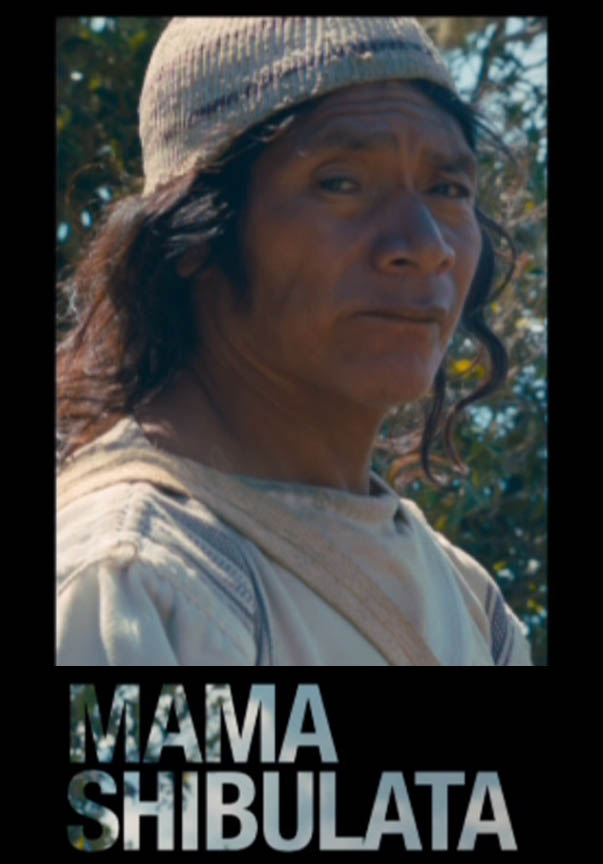 |
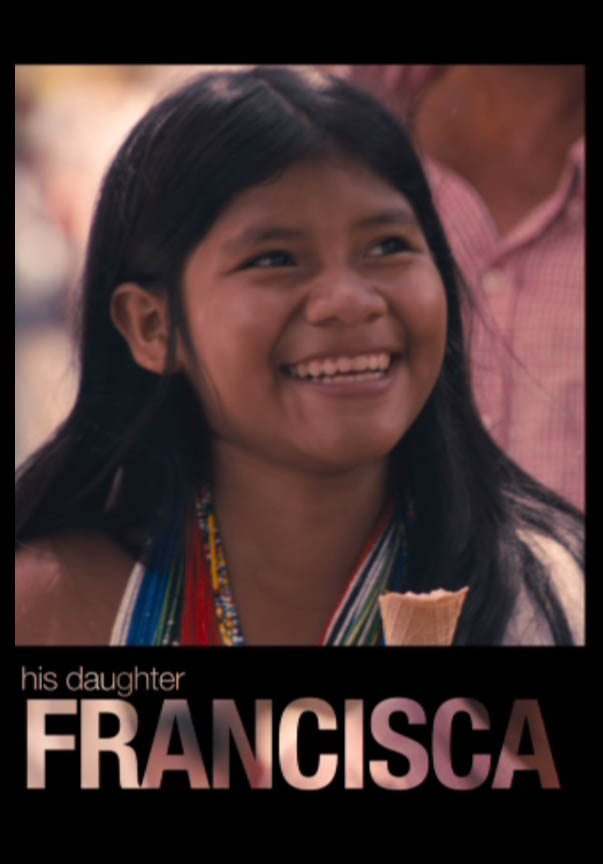 |
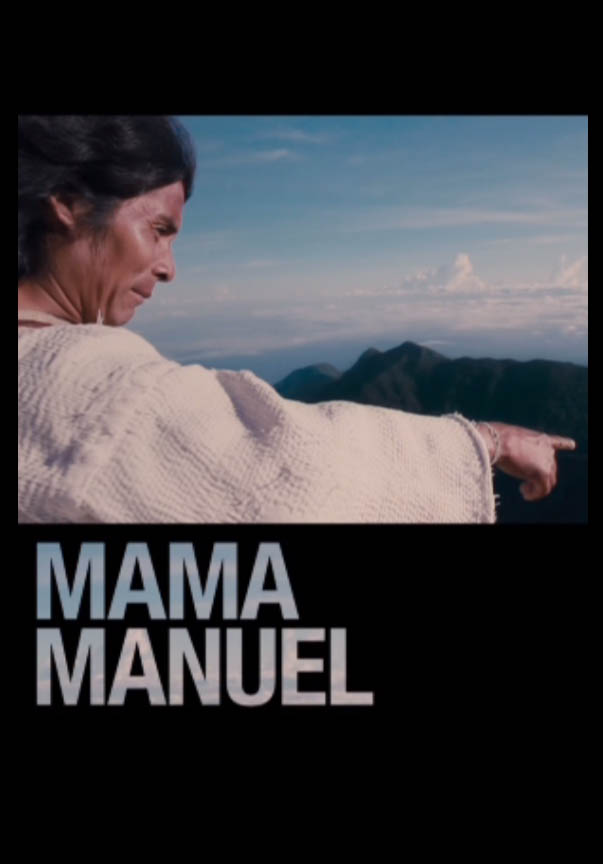 |
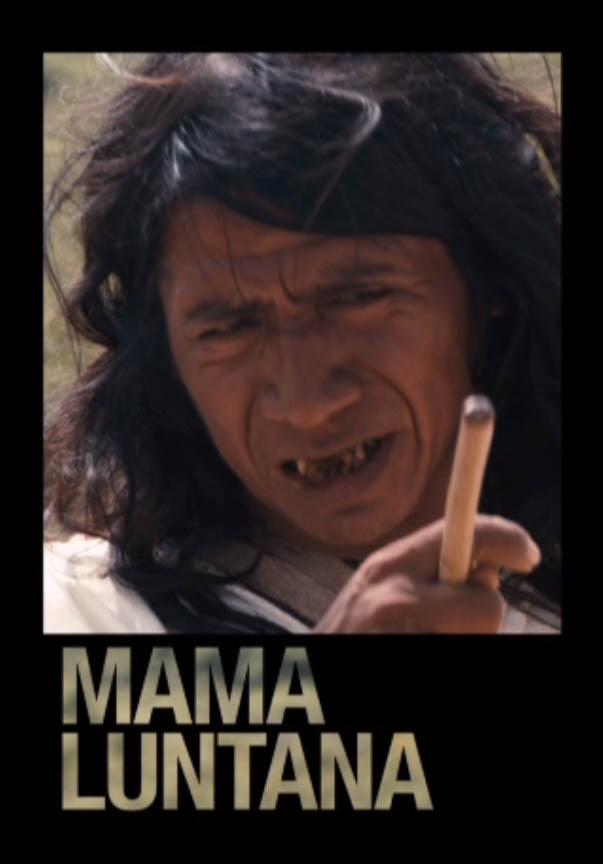 |
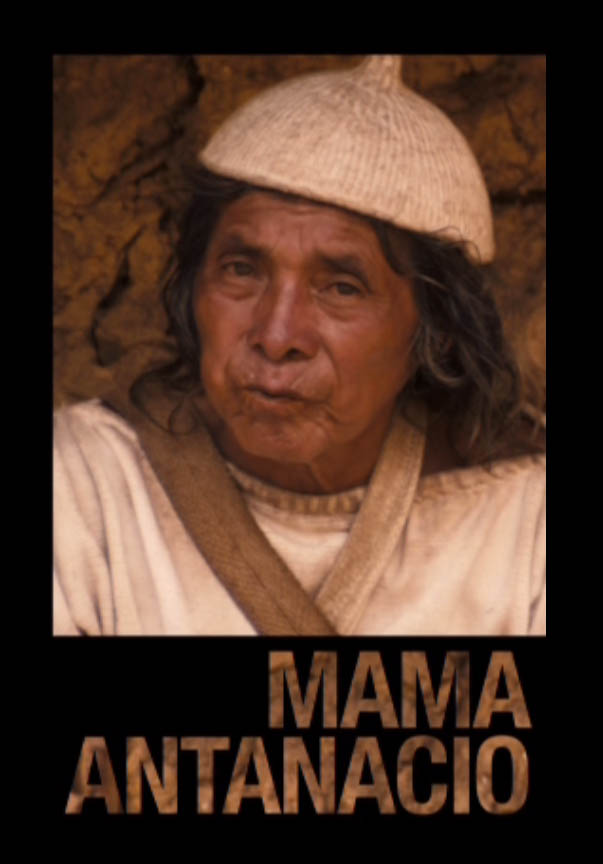 |
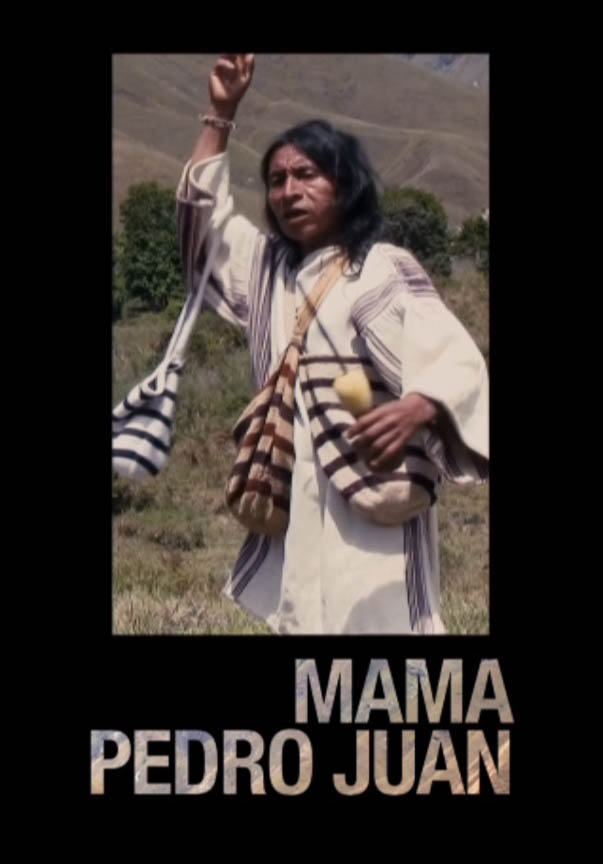 |
 |
 |
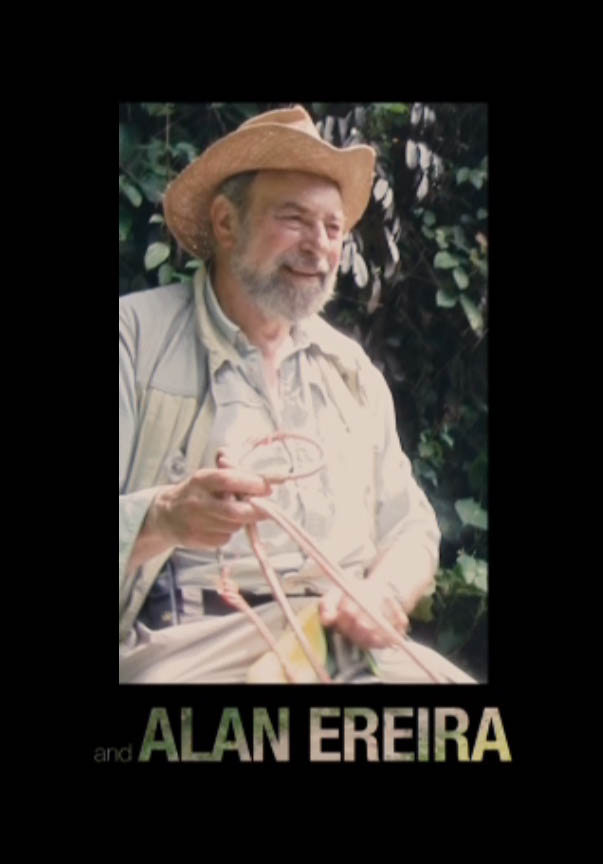 |
Professor of Astronomy, Richard Ellis, Caltech, "Why couldn't we learn from them?"
Professor Jonathan Baillie, Zoological Society of London, "So I think we have much to learn from them."
Professor of Marine Biology, Alex Rogers, Dept. of Zoology, Oxford, "The Kogi think about threads between these systems, effectively these systems really are very strongly interconnected.....Along this stretch of coastline in Colombia you must have a microcosm of what is happening elsewhere in the Caribbean and also elsewhere on the planet. Their views that all these activities are really having a serious impact on a larger scale are quite right."
Can we learn from these people?
